Your Cart is Empty
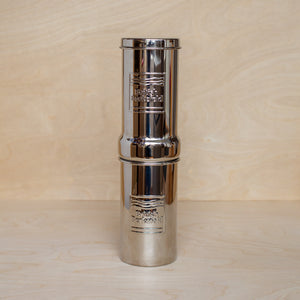
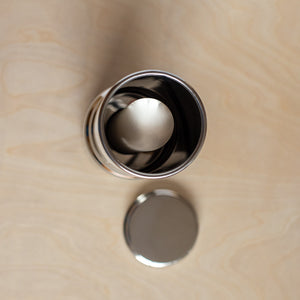
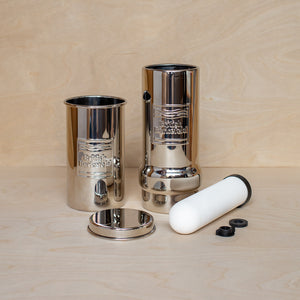
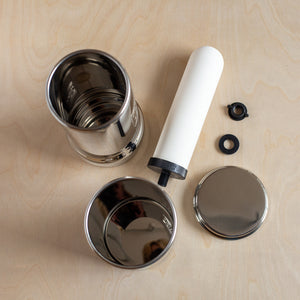
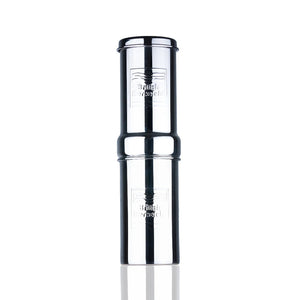
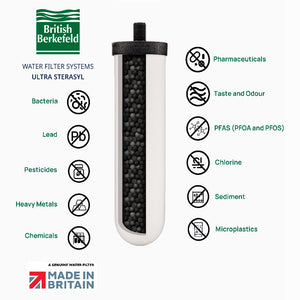
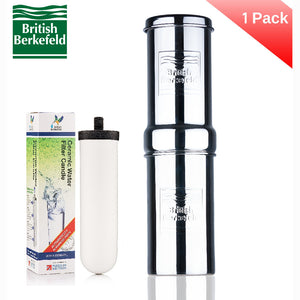
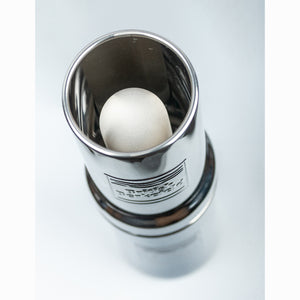
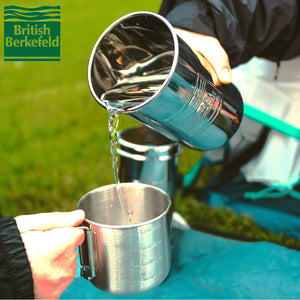
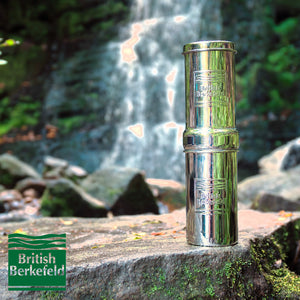
British Berkefeld Stainless Steel Gravity System - Adventure 1L
$186.00
The portable British Berkefeld Adventure stainless steel gravity filter comes with one Ultra Sterasyl ceramic filter cartridge. This filter protects from chlorine, lead, heavy metals, chemicals, emerging contaminants and bacteria. It is NSF certified for standards 42, 53 and 372 for cyst, turbidity, particulate & lead reduction.
Compact for travel and camping. It has a 1L capacity and is approximately the same size as a Go Berkey. Made in Britain.
The British Berkefeld logo is embossed into the stainless steel housing.
Capacity: 1L (0.25 gal)
See Assembly, Operating and Maintenance Instructions here.
-
What contaminants do British Berkefeld gravity filters remove?
The Ultra Sterasyl replacement gravity filter by British Berkefeld is NSF certified. It protects against chlorine, lead, heavy metals, chemicals, PFAS (PFOS & PFOA), pesticides, pharmaceuticals, microplastics, bacteria, and cysts.How do British Berkefeld's Ultra Sterasyl ceramic filters compare to Black Berkey elements?
British Berkefeld systems with Ultra Sterasyl ceramic filters are NSF certified and are the superior product. Both brands have test results for hundreds of contaminants, but good test results should also indicate that protection is sustained for a reasonable number of gallons of use. Berkey test results lacked this important factor.Do the Ultra Sterasyl ceramic filters need to be primed?
No. The Ultra Sterasyl and Ultra Fluoride ceramic filters do not require priming.How often should the Ultra Sterasyl ceramic filters be replaced?
The Ultra Sterasyl ceramic cartridges should be replaced within 6 months of first use, per filter.Do British Berkefeld filters also purify water of micro-organisms?
Yes. British Berkefeld has specialized in and perfected the use of ceramic filters for water purification for almost 200 years. Purification refers to the removal of micro-organisms.My gravity system is full of water, but no water comes out when I open the spigot.
If you open the spigot and lift the upper chamber off the lower chamber, does water flow out of the spigot? If so, it means your upper chamber sits so tightly into your lower chamber that an airlock has been created. An easy solution is to create a slight air gap between the upper and lower chambers by bending a paperclip or a twist tie over the upper lip of the lower chamber.Why has water leaked around the base of my gravity filter system?
Check that your spigot washers are properly positioned, and that the spigot is sufficiently tightened to prevent leaks.How often should I clean my British Berkefeld system?
We recommend cleaning your housing once per month with warm soapy water. Use dilute vinegar on the stainless steel housing to remove any limescale build up. Do NOT use warm water, vinegar, or soap to clean the ceramic replacement filters.The upper and lower chambers of my gravity system never empty completely. Is this normal?
Yes, this is normal. This remaining water in the upper chamber will be pushed through the filters when the next batch of water is introduced. The water below the spigot hole in the lower chamber will be mixed with the next load of water that filters through from the upper chamber. In this way, all the water in your system keeps moving along and gets continually replaced by new, incoming water.Can I use red food colouring to test ceramic gravity filters?
The red dye test (recommended by Berkey) suggests that red food colouring is an appropriate surrogate for demonstrating whether waterborne contaminants can pass through your gravity filter. This is misleading.
a. Red food colouring is not an appropriate surrogate for waterborne contaminants.
b. Passing red food colouring through a gravity filter is not an indication of contaminant removal or filter performance.
c. Red food colouring, itself, is not safe to ingest so why needlessly stain your white ceramic filters with it. DO NOT perform the red food dye test on ceramic water filters.How can I test to make sure my filter is working?
Accurate testing can only be done by a lab equipped for testing water samples. This is expensive.
The best approach is to purchase a water treatment device that has already been tested by accredited labs for the sustained reduction of contaminants known to occur in your local tap water. Once properly assembled or installed, maintain the device with regular cleaning and cartridge replacement.How often should I clean my ceramic filters?
Cleaning frequency will be determined by your local water conditions. As the white ceramic becomes increasingly discoloured, the flow rate through the filter will probably diminish. When the flow rate becomes annoyingly slow, remove the cartridges from the housing. Hold each one under cool running water and scrub the discoloration off the surface of the white ceramic. Reinstall the cartridges and resume use.
NOTE Be careful not to let any scrubbing water enter the threaded end of the cartridge during the cleaning process.How long can I store unused ceramic filters?
As long as they have never been wetted, you can store unused ceramic Berkefeld filters indefinitely in a clean, dry location away from fumes. Leave them in their original packaging and wrap the entirety tightly in a clean plastic bag.What should I do with my filters and system when I am away on vacation?
If the system will be unused for more than 3 days, remove the ceramic filters from the housing, drain as much water as possible out of the threaded end of the filters, lay the ceramic filters on a drying rack or in such a way as to provide clean air circulation to all sides of the cartridges while you are away. Empty the housing. Leave the upper and lower chambers inverted on a drying rack. When you return from vacation, re-install the ceramic filters and flush one entire batch of water through the system before resuming use.Do not leave wet filters unused in a location where they might freeze…such as overwintering them in a summer cottage.












